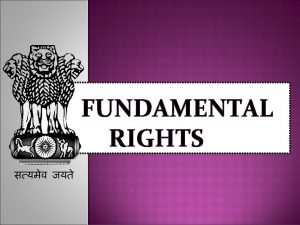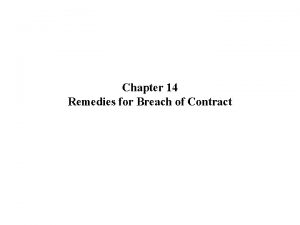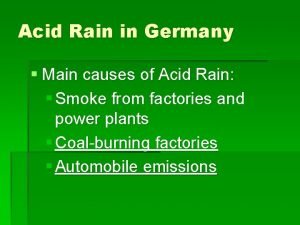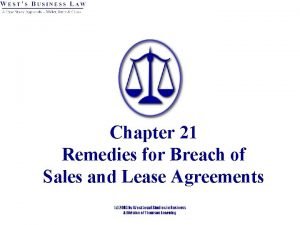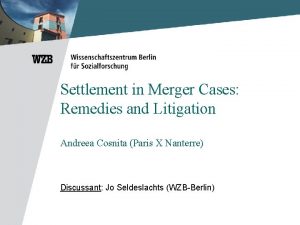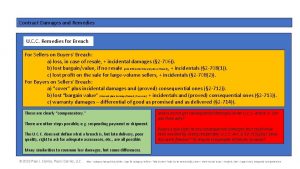Fixit First and Phase I Merger Remedies 1










- Slides: 10

Fix-it First and Phase I Merger Remedies 1 May 2007 Simon Priddis, Partner, Freshfields Bruckhaus Deringer, London BIICL Conference: 7 th Annual Trans-Atlantic Antitrust Dialogue

Framework for first phase remedies under ECMR Suspensory obligation – buyer unable to assume full antitrust risk (as in UK) Unrealistic to “ring-fence” EC and close transaction elsewhere Tight ECMR time limits – commitments within 20 working days of notification Very limited ability to engineer extra time through “stop the clock” in Phase I Question: how to do deal with cases where the remedy is not sufficiently “clear-cut” and certain?

Percentage of ECMR Phase I clearances that were conditional

Option 1 – “Fix it first” solutions n 1(a) – “Fix-it-first” - US-style - buyer implements divestment of its own assets to avoid overlap with the target business n n Any antitrust clearance for sale of own assets must be obtained before Commission decision on the main purchase 1(b) – “Fix-it-first” - EC-style – buyer signs SPA for divestment of part of target assets during Phase I investigation n If Commission authorises main transaction, “no additional Commission decision for the purchaser approval will be needed and the closing of the sale of the divested business may take place shortly afterwards” n E. g. Inco/Falconbridge (2006) (although note: Phase II) Timing Overkill Importance of Need advance notice definitely solving in order to be able to concerns may lead to identify purchaser and overkill (especially US arrange sale style) Dynamic Commercial Risk of damaging relationship if Comn regards this as usurping its review (especially US style) Buyer will need to persuade seller that the fix-it first will be sufficient to avoid Phase II

Option 2 – An upfront buyer n The buyer undertakes in its commitments to the Commission that it will not complete the transaction until: n It has entered into a binding SPA to sell the divestment business n The Commission has approved the divestment buyer n Identity of purchaser unknown to Commission at date of clearance n E. g. Masterfoods/Royal Canin (2002) Timing Delay On-sale dynamic Commercial Commission may want to see list of proposed purchasers in order to agree to granting clearance Completion of main purchase is delayed until SPA of divestment assets has been signed Buyer is a “forced seller” of the divestment assets in order to be able to complete Buyer will need to persuade seller that it will be able to sell divestment assets satisfactorily

Option 3 – Break-up bid n Business to be purchased is split, with the “overlapping” assets being transferred to another buyer n Mechanism often involves formation of an SPV which buys entire target and then on-sells different parts to consortium members n Commission will look through initial sale if: n n Subsequent break-up is “legally binding” n No uncertainty that break-up will take place within a “short time” E. g. Pernod Ricard/Fortune Brands/Allied Domecq (2005) Timing Consortium SPA Commercial Need advance Comn requires main Seller must be warning in order to be Difficulty of identifying purchase to be made persuaded that breakable to agree division consortium members conditional on merger up will avoid Phase II of assets amongst and agreeing division clearance in on-sales in either case consortium

Option 4 – Warehousing-type structure n n The buyer acquires the target business, conditional on Phase I clearance n Buyer transfers overlapping business to trustee (either in sale or to hold on buyer’s behalf) to obtain Phase I clearance n Trustee on-sells the business to a third party purchaser E. g. (variant on this) Procter & Gamble/VP Schickedanz (1994) Uncertainty Overkill Cost Complexity Buyer assumes cost Commission generally Need to transfer all of Time and resources of indemnifying wary of warehousing overlapping business required to negotiate trustee and may lose arrangements to trustee – risk of trustee and on-sale money on eventual on pending appeal ultimate overkill arrangements -sale

Option 5 – Avoidance of the suspensory obligation n n Suspensory obligation does not apply in certain cases: n Public bids (Schneider/Legrand, Tetra Laval/Sidel, Nestlé/Perrier) n Where Commission grants a specific derogation Derogations have been granted where: n Buyer in an auction situation and could not otherwise bid (e. g. Cinven/Angel Street Holdings (2002)) n Target is in severe financial difficulties (e. g. WPP/Cordiant (2003)) Practicality Risk Obtaining derogation Individual derogations still leaves buyer traditionally available exposed to a Phase II only very rarely investigation Interim Cost Commission may require “holdseparate” commitments concerning target Buyer may need to involve trustee to hold assets pending outcome of investigation

Some tentative conclusions … n No “one-size-fits-all” solution – attractiveness and viability of different options depends on: n Timing – fix-it first and break-up bids require advance notice n Risk allocation – how risk-shy is the seller and who are the alternative purchasers? n Significance of overlapping business – what is commercial cost of overkill in the divestment remedy? n EU is still at an early phase in relation to creative remedy solutions n Future considerations: n A greater Commission willingness to grant partial derogations? n Impact of CFI’s Lagardère judgment on warehousing solutions

Fix-it First and Phase I Merger Remedies 1 May 2007 Simon Priddis, Partner, Freshfields Bruckhaus Deringer, London BIICL Conference: 7 th Annual Trans-Atlantic Antitrust Dialogue © Freshfields Bruckhaus Deringer 2007 This material is for general information only and is not intended to provide legal advice. LON 1413038
 Right to constitutional remedies
Right to constitutional remedies Breacof
Breacof Explain what homely or household remedies are
Explain what homely or household remedies are Right to constitutional remedies article 32 to 35
Right to constitutional remedies article 32 to 35 Acid rain remedies
Acid rain remedies Remedies for breach of contract
Remedies for breach of contract Causes of acid rain in germany
Causes of acid rain in germany Positive malperformance examples
Positive malperformance examples Breach of fiduciary duty remedies
Breach of fiduciary duty remedies Remedies for breach of contract
Remedies for breach of contract Remedies for breach of contract
Remedies for breach of contract



